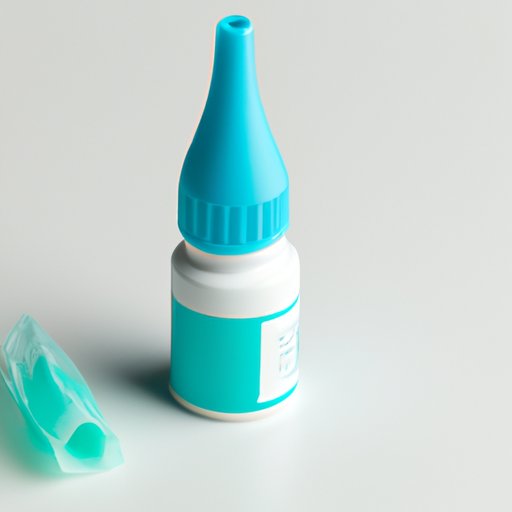
Introduction
Flonase is a popular nasal spray medication that has been used for many years to treat allergy symptoms. It’s a great medication when used correctly, but there are risks involved with long-term use that many people aren’t aware of. The purpose of this article is to help readers understand the science behind Flonase, the optimal dosage and frequency for safe usage, the potential consequences of extended use, and how to minimize the risks.
The Science Behind Flonase: A Comprehensive Guide to Understanding its Effects and Long-Term Use
Flonase is a nasal steroid spray that works by reducing inflammation in the nasal passage. It contains fluticasone, a steroid that reduces swelling and inflammation in the nasal passage, which helps to relieve symptoms of allergies such as sneezing, congestion, and runny nose.
While Flonase can provide significant relief for allergy sufferers, it’s important to understand the potential impact it can have on the body. Flonase can be absorbed into the bloodstream, which can cause potential side effects in some people. Common side effects include headache, nosebleeds, and nasal irritation. However, these side effects are generally mild and typically go away after a short period of time.
Maximizing the Benefits of Flonase: Dosage, Frequency, and Safe Usage Guidelines
The optimal dosage for Flonase depends on the individual and the severity of their symptoms. Typically, the recommended dosage is one or two sprays in each nostril once a day. It’s important not to exceed the recommended dosage, as this can increase the risk of side effects.
To use Flonase safely, it’s important to follow proper usage guidelines. Before using the medication, blow your nose gently to clear your nasal passages. Shake the bottle well, then insert the nozzle into one nostril and close the other nostril with your finger. Breathe in gently while spraying the medication into your nostril, then repeat in the other nostril. After using Flonase, tilt your head back slightly and breathe in gently to help spread the medication throughout your nasal passages.
To avoid possible side effects, it’s important to avoid overusing Flonase. Using the medication for extended periods of time or at higher than recommended dosages can lead to an increased risk of side effects. It’s also important to speak with your doctor if you have any concerns about using Flonase or if you experience any side effects.
Flonase and Allergies: How Long is Too Long to Rely on Nasal Spray for Relief?
Many people wonder how long they can safely use Flonase for allergy relief. While Flonase can be used for extended periods of time, it’s important to use the medication responsibly and monitor for potential side effects. Using Flonase for prolonged periods of time can lead to an increased risk of side effects, such as nosebleeds and nasal irritation.
To properly manage allergies without relying solely on Flonase, it’s important to identify and avoid triggers where possible. This can include pet dander, pollen, and mold. Over-the-counter antihistamines and decongestants can also provide relief for allergy symptoms and may be used in combination with Flonase.
The Hidden Dangers of Long-Term Use of Flonase and How to Avoid Them
While Flonase can provide significant relief for allergy sufferers, there are risks associated with prolonged use. These risks include an increased risk of developing thrush (a fungal infection in the mouth), cataracts, and glaucoma. These risks are generally low if Flonase is used as directed, but it’s important to monitor for potential side effects and speak with your doctor if you have any concerns.
To avoid the risks associated with long-term use of Flonase, it’s important to use the medication in moderation and to speak with your doctor if you have any concerns. It’s also important to monitor for potential side effects and to use the medication as directed.
Flonase: Finding the Right Balance Between Effective Relief and Responsible Usage
Using Flonase responsibly involves finding the right balance between effective relief and responsible usage. To achieve this, it’s important to use the medication as directed and to monitor for potential side effects. It’s also important to identify and avoid triggers for allergies where possible and to consider using other medications in combination with Flonase.
If you have any concerns about using Flonase or if you experience any side effects, it’s important to speak with your doctor. Your doctor can provide guidance on proper usage and can help you find the right balance between effective relief and responsible usage.
Conclusion
In conclusion, Flonase can provide significant relief for allergy sufferers when used correctly. By understanding the science behind Flonase, using the medication responsibly, and monitoring for potential side effects, you can safely use Flonase for relief of allergy symptoms. Remember to find the right balance between effective relief and responsible usage to ensure that you get the best results from Flonase while minimizing the risks.
If you have any questions or concerns about using Flonase, speak with your doctor. They can provide additional guidance and resources to help you manage your allergy symptoms.





